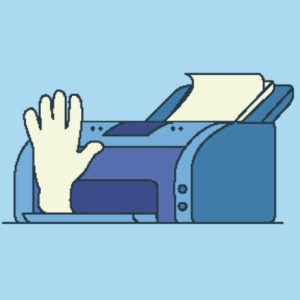Winthrop’s new printer will not be draining anyone’s print quota
3-D printing is a process that most people have heard of or seen done in Facebook videos, but bioprinting is a lesser known process that is now being done at Winthrop University
Over the summer, Matt Stern, who holds a doctorate in anatomy and cell biology, acquired funding to purchase a 3-D bioprinter. This bioprinter has the ability to take living microscopic cells that have been mixed into a solution and turn these cells into complex designs.
Through the use of cells, chemical solutions, computer programming and compressed air, the new BioBots printer will allow Winthrop students and professors to work on projects that would normally be exclusive to largely-funded universities.
This new addition to the science lab is a major selling point for future students.
“There’s not a lot of institutions around the country where undergraduates in particular get to experiment with 3-D printing,” Stern said.
The use of these bioprinters has revolutionized the world of cellular study, creating possibilities that would have never been thought of before.
“Rather than having a cell stuck to a piece of plastic, which has its merit but is somewhat limited, we can put the cells into complex 3-D environments that we engineer and control,” Stern said.
The printer sits in a small lab in Dalton Hall, along with a microscope, an incubator to keep cells at the correct temperature, a fridge for cooling other chemical solutions and a workspace that protects the cells from contamination. So far, students have been able to print a simple cylinder that was the same size as a bronchial tube, but more opportunities are on the way. Two undergraduate students conducted a summer research project to make the printer more accessible.
Biology majors Chandler Burt and Anneke van Eldik worked with the bioprinter to create a bio-ink, and presented their work at the SURE Poster presentation.
“Dr. Stern is basically doing his research on cells and stem cells, and he wanted to be able to see if we could print the cells within different structure to show that they could live within the gel we were producing,” Burt said.
The gel that Burt and van Eldik worked on will be essential for future printing.
“You cannot print with no material, so that is what our research was for was to create a bio-ink that will eventually be seeded with cells to print tissue with living cells in it,” said van Eldik.
Stern plans on using the printer in his own classes. While it can be difficult to learn at first, he believes that experience with this device will lead to some interesting questions from his students.
“We can change and tweak different variables to come at some real complex problems from a lot of different angles,” Stern said. “I think it really opens up possibilities for undergraduate research studies.”
While Stern wants to use the printer for advanced biological purposes, he is much more interested in what students will get out of working with it.
“It’s a very cross disciplinary platform, it requires expertise in biology obviously but also material science and chemistry, engineering and of course design too,” said Stern. “So it’s a really good opportunity for Winthrop students to develop a skill set that is really marketable in graduate professional and medical school down the road, and that’s probably what I am most excited about in terms of having it in the lab and available.”
While Winthrop students will not be printing off ears anytime soon, this new technology opens countless doors for future endeavors, experiments and breakthroughs.




